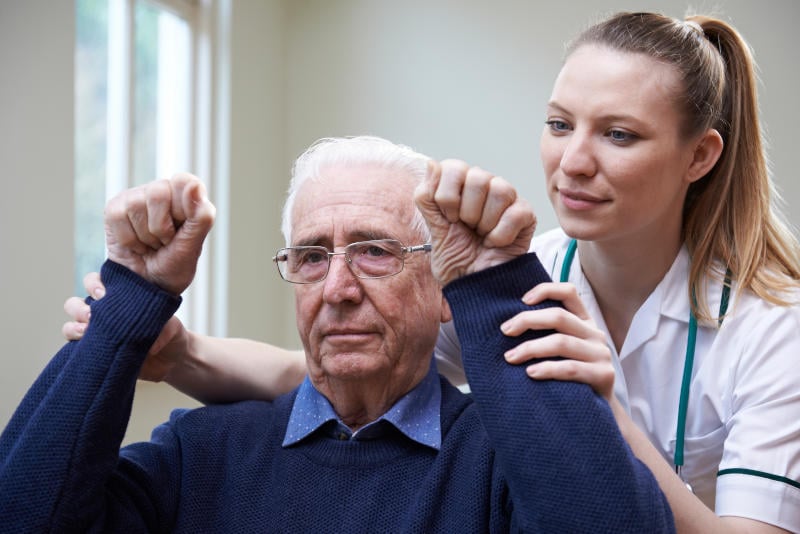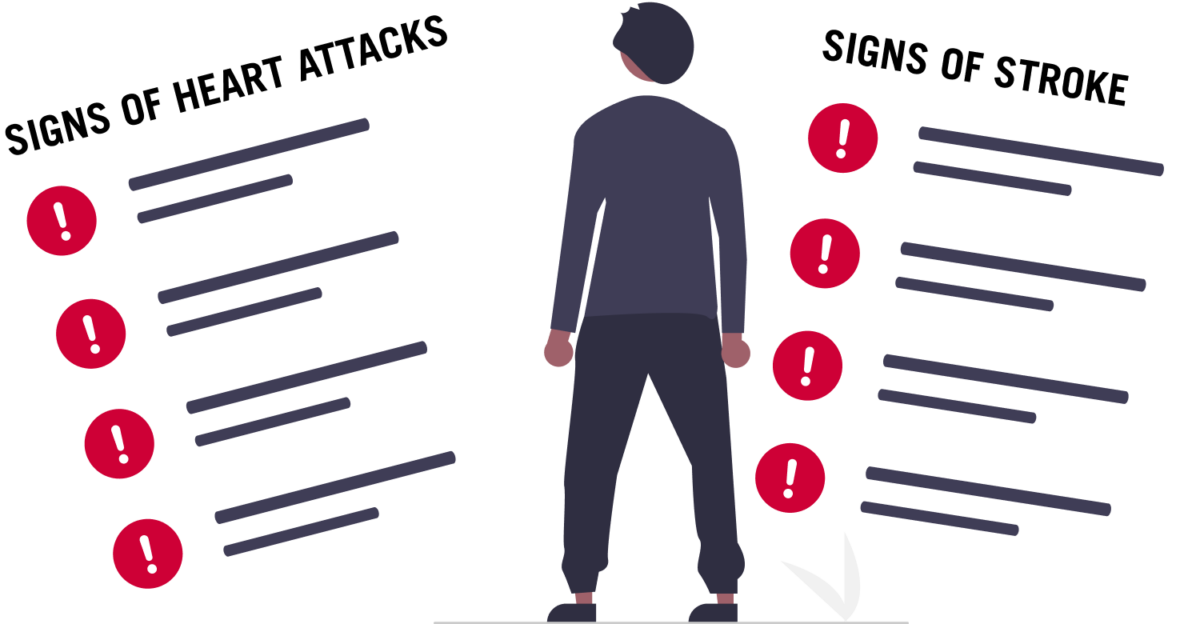If a person around you suddenly said they felt pain and collapsed, would you know the difference between heart attack and a stroke to step in and help? While stroke and heart attack are two very different medical conditions, they share a few similar signs and symptoms — and knowing how to distinguish them can save someone’s life.
The Centers for Disease Control and Prevention (CDC) reports 795,000 people have strokes and 805,000 people have heart attacks each year. That’s nearly one victim of each every 40 seconds. Unfortunately, that also means both heart attack and stroke are equally as likely to be a possibility in an emergency.
Read on to learn the difference between heart attack and a stroke, early warning signs, and how to provide effective first aid.
What Is a Heart Attack?
The biggest difference between heart attack and a stroke is the organ experiencing the trauma. In the case of a heart attack, that organ is, evidently, the heart.
According to Mayo Clinic, a heart attack, also known as a myocardial infarction, is the blockage or severe reduction of blood flow in the heart. These blockages are caused by the collection of substances referred to as plaque in the arteries in and around the heart.
These plaques consist of fat and other cholesterol-based substances that build up over time on the walls of the arteries in a process referred to as atherosclerosis. When plaque build ups reach the point of reducing — or altogether blocking — blood flow, the lack of oxygen results in damage to the tissue in the heart.
What Are the Signs of a Heart Attack?
The signs of a heart attack can often be mistaken for other common ailments frequently experienced by people of all ages. These include:
- Chest pain, pressure, or tightness
- Unexplainable fatigue
- Shortness of breath
- Cold sweats
- Feelings of heartburn or indigestion
- Lightheadedness or sudden onset dizziness
- Nausea
Some people may experience all or just a few of these symptoms, but when paired with high-risk factors for a heart attack, the urgency for action rises significantly. That’s why it’s essential to not only know the difference between heart attack and a stroke but also whether you’re at a higher risk for one or the other.
What Is a Stroke?
A stroke happens when there’s a blockage of the blood flow in the brain. This lack of oxygen-filled blood flow quickly leads to death of brain tissue, which underlines the need for rapid identification and treatment.
What Are the Signs of a Stroke?
The difference between heart attack and a stroke is minor but monumental. Knowing the acronym FAST can help you quickly distinguish between the two and identify whether a person is experiencing a stroke:

- Face. Ask the person to smile. Are they able to smile evenly, or does one side of their face droop?
- Arms. Ask the person to raise their arms above their head at the same time. Are they able to raise both arms evenly, or do they struggle to lift one arm?
- Speech. Ask the person to repeat a simple sentence. Are they able to understand and repeat the sentence?
- Time is of the essence. If the answer to any of these questions is yes, you should contact emergency services and immediately seek medical help.
In 2014, Johns Hopkins University reported that there was a two-decade-long decrease of 20% in stroke-related deaths, partially thanks to advances in treatment and management of risk factors for stroke. Quick recognition of early symptoms no doubt helps improve survival rates.
What Is First Aid for a Stroke or Heart Attack?
Once you’ve recognized the difference between heart attack and a stroke, the urgency for first aid is the same. While both can be experienced with a person who is still conscious and able to communicate and move, the victim can benefit from being placed in the recovery position as long as they are still breathing independently.
Laying the person on their left side, with their right leg bent to provide stability, allows their airway to remain open. You should work to remove or loosen any tight-fitting clothing that may restrict his or her breathing.
Should a person lose consciousness, you should immediately begin CPR and call 911. As both heart attacks and strokes cause the majority of their damage through an absence of blood flow to deliver oxygen throughout the body, even chest-only compressions can help to improve survival rates significantly, according to Healthline.
Knowing the Difference Between Heart Attack & Stroke Can Save a Life
The stress of the moment when a person clutches their chest or collapses can be immense. Knowing the difference between heart attack and a stroke and the early warning signs of each is a great first-aid preparedness step towards being able to step into those situations with the confidence that you know what you’re doing.
Taking that knowledge one step further to be able to provide first aid in the form of performing effective CPR can make all the difference in saving a life. Basic knowledge of CPR is the foundation that quality CPR instruction can build upon to prepare you for the moment you need to help save a life.
Contact us today to learn more about our group and remote-staff CPR certification programs.
